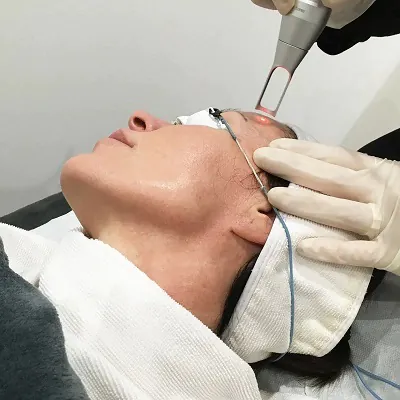
by Enfieldabudhabi | Oct 3, 2025 | Health
In the pursuit of flawless skin, advanced laser technologies have revolutionized skincare treatments, offering more precise, efficient, and less invasive options. Among the latest innovations is Pico laser abu dhabi therapy — a cutting-edge solution designed to target various skin concerns with speed and minimal downtime. In Abu Dhabi, where the climate and lifestyle can affect skin health, Pico Laser treatments are increasingly sought after for their fast results and effectiveness in treating pigmentation, acne scars, and signs of aging.
What Is Pico Laser?
Pico Laser, short for picosecond laser, is a non-invasive laser technology that delivers ultra-short bursts of energy — measured in picoseconds (trillionths of a second). Unlike traditional lasers that use heat to break down pigmentation, Pico lasers use rapid pressure pulses, which shatter unwanted pigment or skin irregularities without significantly damaging surrounding tissue.
The precision and speed of Pico Laser make it a preferred choice for individuals seeking quick results with reduced risk of side effects or prolonged recovery. Its versatility allows it to address multiple skin concerns in fewer sessions compared to older laser systems.
How Pico Laser Works
Pico Laser works by delivering concentrated pulses of light energy into the deeper layers of the skin. These ultra-fast pulses cause a “photoacoustic” effect — a mechanical impact — that breaks down pigment particles and stimulates collagen and elastin production.
Because it doesn’t rely on heat like many other lasers, Pico Laser is gentler on the skin, making it suitable for a wider range of skin types, including those prone to sensitivity or pigmentation issues.
Key Benefits of Pico Laser Treatments
Fast and Targeted Results
Thanks to its ultra-short pulse duration, Pico Laser treatments work quickly and accurately. Most skin concerns begin to improve after just a few sessions, with some individuals seeing visible changes after the first treatment.
Minimal Downtime
One of the most appealing aspects of Pico Laser therapy is the minimal recovery time. While some mild redness or slight swelling may appear after a session, these typically subside within a day or two, allowing patients to resume normal activities quickly.
Safe for Various Skin Types
The laser’s precision and non-thermal energy delivery make it safer for darker skin tones, which are typically more prone to hyperpigmentation with conventional lasers.
Skin Rejuvenation
Beyond pigment removal, Pico Laser helps in overall skin revitalization. It improves texture, reduces pore size, smooths out fine lines, and gives the skin a brighter, more even tone.
Common Skin Concerns Treated with Pico Laser in Abu Dhabi
Pigmentation and Sun Damage
In Abu Dhabi, prolonged sun exposure can lead to melasma, freckles, and other types of pigmentation. Pico Laser effectively breaks down excess melanin, helping to clear uneven patches and restore clarity to the skin.
Acne Scars and Texture Irregularities
Pico Laser stimulates collagen remodeling, which helps reduce the appearance of acne scars, pits, and uneven skin texture. The result is smoother and healthier-looking skin over time.
Fine Lines and Early Signs of Aging
By encouraging new collagen production, Pico Laser naturally firms the skin and softens fine lines without the need for injectables or surgical treatments.
Tattoo Removal
Pico Laser is also widely used for tattoo removal. Its short pulse duration shatters tattoo pigment into smaller particles, making it easier for the body to flush them out. It often requires fewer sessions than traditional lasers and carries a lower risk of scarring.
What to Expect During the Treatment
Consultation
A skincare professional evaluates your skin concerns and determines whether Pico Laser is the right treatment for you. This includes assessing your skin type, condition severity, and medical history.
During the Procedure
The treatment area is cleaned, and protective eyewear is provided. A numbing cream may be applied for added comfort, though many patients find the procedure tolerable without it. The laser is then passed over the skin, and most people describe the sensation as a series of quick snaps or pulses.
Aftercare and Recovery
After the treatment, the skin might appear slightly red or feel warm — similar to a mild sunburn. Cooling or soothing products are often applied immediately after. It’s important to avoid sun exposure and use sunscreen regularly during the healing phase.
Treatment Frequency and Results
Most individuals require multiple sessions (typically 3 to 5) spaced a few weeks apart for optimal results. The number of treatments depends on the skin issue being addressed, the depth of pigmentation, and individual response to the laser.
Improvements are usually noticeable after the first session, with skin becoming clearer, brighter, and more even-toned over time. For tattoo removal or deep pigmentation, more sessions may be needed.
Suitability for Abu Dhabi’s Climate
Living in Abu Dhabi means regular exposure to intense sunlight, which can worsen pigmentation, age spots, and skin damage. Pico Laser is ideal in this environment because:
-
It offers fast results with minimal disruption to daily life.
-
It addresses common concerns caused by sun exposure.
-
It suits a wide range of skin tones, making it effective for the region’s diverse population.
FAQs About Pico Laser Treatments in Abu Dhabi
Is Pico Laser painful?
Most people describe the sensation as a snapping feeling on the skin. Numbing cream can be used to reduce discomfort, and sessions are usually quick.
How long does a session take?
A typical treatment takes between 15 to 30 minutes, depending on the area being treated.
How soon will I see results?
Some individuals see improvement after the first session. However, full results typically appear after several sessions.
Can I wear makeup after treatment?
It is generally recommended to avoid makeup for at least 24 hours after treatment to allow the skin to breathe and heal.
Are there any side effects?
Mild redness, slight swelling, or a warm sensation may occur immediately after the treatment. These effects usually subside within a day or two.
Is it safe for darker skin tones?
Yes, Pico Laser is considered safer for darker skin tones compared to traditional lasers, due to its non-thermal, precision-based approach.
Final Thoughts
Pico Laser treatments offer a fast, effective, and safe solution for a variety of skin concerns — from pigmentation and acne scars to general rejuvenation. In a vibrant, sun-drenched city like Abu Dhabi, where skin damage can occur more quickly, this advanced technology provides a reliable way to maintain clear, youthful-looking skin with minimal downtime.
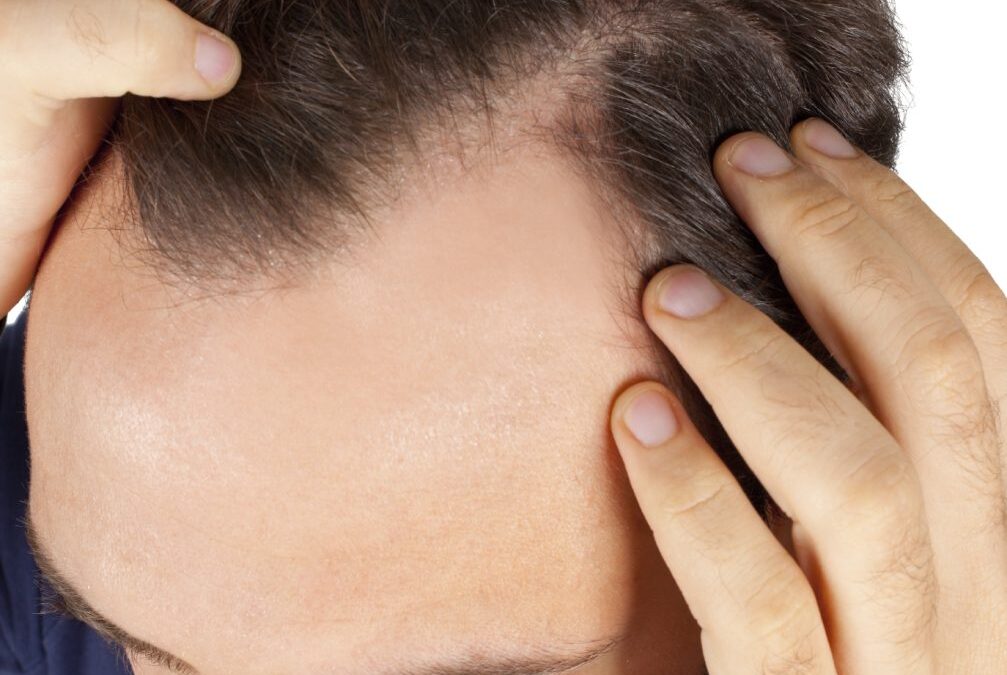
by Enfieldabudhabi | Oct 3, 2025 | Health
Hair texture plays a vital role in how hair looks, feels, and responds to styling. Factors such as environmental stress, heat exposure, product buildup, and even water quality can negatively affect hair texture over time. In Abu Dhabi, where climate conditions often include intense sun, high temperatures, and occasional dryness, many individuals face challenges like brittle, frizzy, or thinning hair. One of the emerging solutions for improving hair quality and texture is Gfc hair treatment abu dhabi, an advanced regenerative procedure designed to rejuvenate hair health naturally.
What is GFC Hair Treatment?
GFC stands for Growth Factor Concentrate. It is a modern, non-surgical hair therapy that utilizes your body’s own healing and regenerative components. The treatment involves drawing a small amount of your blood, processing it to concentrate the growth factors, and then injecting these into targeted areas of the scalp.
Unlike traditional PRP (Platelet-Rich Plasma), GFC treatment uses a more refined method to isolate only the pure growth factors without unnecessary cells like red or white blood cells. This highly concentrated formulation is then introduced into the scalp to stimulate dormant hair follicles, enhance blood circulation, and nourish the roots—leading to healthier, stronger, and smoother hair strands over time.
How GFC Treatment Improves Hair Texture
The texture of your hair is directly linked to the health of your scalp and the vitality of your follicles. GFC treatment improves hair texture through several mechanisms:
Enhanced Follicle Function
Growth factors help rejuvenate and activate weakened or dormant hair follicles. This encourages the growth of new strands and improves the thickness and quality of existing hair. With healthier follicles, hair tends to grow out smoother and with more natural sheen.
Reduced Hair Breakage
By strengthening the roots and nourishing the hair shaft from within, GFC treatment reduces brittleness and hair breakage. This means less frizz and more manageable hair.
Improved Scalp Health
A healthy scalp is the foundation for good hair. GFC enhances blood flow to the scalp, allowing for better nutrient delivery and oxygenation. This helps reduce dryness, irritation, or flaking—creating a stable environment for hair to grow in a more consistent texture.
Restoration of Volume and Shine
As hair becomes healthier and more robust, it gains volume and a natural shine. Improved texture also makes hair easier to style, hold shape, and retain moisture better.
GFC Treatment Process in Abu Dhabi
Here’s what a typical GFC hair treatment experience may look like:
Consultation and Assessment
The process begins with a thorough scalp and hair evaluation to determine the suitability of the treatment. Factors like hair density, texture, and scalp health are assessed.
Blood Collection and Preparation
A small sample of your blood is drawn. It is then placed in a specialized system to isolate and concentrate growth factors. This process typically takes around 30 to 40 minutes.
Scalp Application
The concentrated growth factors are carefully injected into the scalp, targeting areas of thinning or damaged hair. Fine needles are used, and numbing cream is usually applied beforehand to ensure comfort.
Post-Treatment Care
After the procedure, patients are given aftercare instructions which may include gentle washing, avoiding sun exposure, and refraining from using harsh hair products for a few days.
Expected Results and Timeline
Improving hair texture with GFC is a gradual process. Most people begin to notice subtle improvements within a few weeks after their first session. Visible changes in hair quality and texture generally occur after the second or third session.
-
First Few Weeks: A decrease in hair fall and a feeling of smoother strands.
-
After 2–3 Sessions: Increased hair density, more volume, less brittleness, and reduced dryness or frizz.
-
Long-Term: Sustained improvements in hair texture, with hair becoming noticeably more manageable, healthier, and shinier.
For best results, multiple sessions are usually recommended, followed by maintenance treatments every few months.
Who is an Ideal Candidate?
GFC hair treatment is suitable for individuals experiencing early signs of hair thinning, poor hair texture, or scalp imbalances. It is also a great choice for those who want to improve the overall quality of their hair without resorting to surgical options.
People experiencing the following conditions may benefit:
-
Weak or thinning hair
-
Frizzy, dry, or brittle strands
-
Hair damaged by heat styling or environmental exposure
-
Patchy hair loss due to stress or lifestyle
-
Dull and lifeless hair lacking shine or volume
Both men and women can safely undergo GFC treatment, and it is effective across various hair types and textures.
What to Expect After Treatment
GFC is minimally invasive and typically requires no downtime. You may experience slight redness or sensitivity at the injection sites, but this usually fades within a day or two. The treatment does not affect your ability to carry on with daily activities.
To support the effects of the treatment:
-
Use gentle, sulfate-free shampoos
-
Avoid direct sun exposure on the scalp for a few days
-
Refrain from heat styling immediately after treatment
-
Maintain a healthy diet to support follicle nutrition
Regular treatments, combined with proper hair care, can lead to long-lasting improvements in hair texture and overall appearance.
FAQs About GFC Hair Treatment
Is the treatment painful?
The procedure involves minor injections into the scalp, but a numbing cream is usually applied to minimize discomfort. Most people describe the sensation as a light pricking or tingling.
How many sessions are needed?
Typically, 3 to 4 sessions spaced a few weeks apart are recommended for noticeable improvements. Maintenance sessions every 4 to 6 months help retain results.
How long does each session take?
Each session may take about 60 to 90 minutes, including preparation and the injection process.
Will it change my hair type?
GFC does not alter your natural hair type (curly, straight, wavy), but it improves the quality and health of your existing hair. This results in smoother, shinier, and less frizzy strands.
When will I start seeing results?
Early improvements such as reduced shedding and smoother texture may be visible within the first few weeks. Fuller results usually appear after multiple sessions.
Final Thoughts
Improving hair texture requires more than just topical solutions or hair products. GFC hair treatment offers a scientifically backed, natural approach to rejuvenating scalp health and enhancing the quality of each strand. In Abu Dhabi, where environmental conditions can strain hair health, GFC is gaining popularity among individuals seeking long-term solutions for smoother, stronger, and healthier hair.
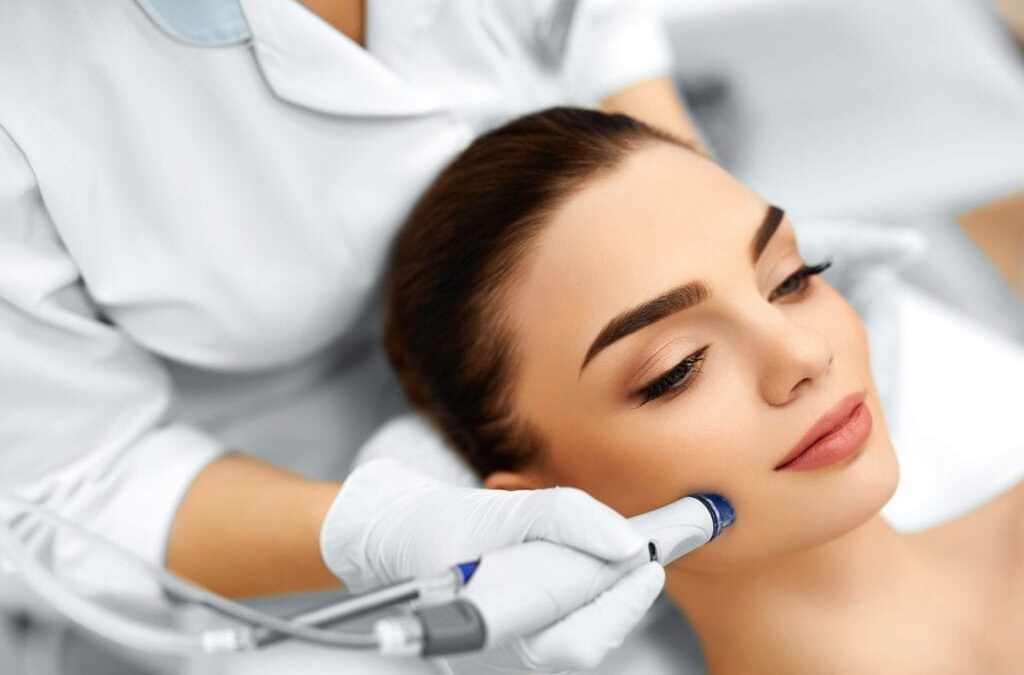
by Enfieldabudhabi | Oct 3, 2025 | Health
Moles are common skin growths that many people live with without issue. In some cases, however, a mole may need to be removed for medical reasons (if there is concern about malignancy or changes in its appearance) or simply for cosmetic reasons (to improve appearance or comfort). In Mole removal abu dhabi, there are several safe and effective approaches available. This article explores mole removal techniques, what to expect, how to prepare and recover, and how to choose the right treatment.
What Is a Mole and When Removal Is Considered
A mole (also called a nevus) is typically a cluster of pigmented cells. Most moles are benign and asymptomatic. Removal may be considered for two broad reasons:
-
Medical indication: If a mole changes in size, colour, shape, bleeds, itches, or shows other warning signs, it may be suspicious and require evaluation. Removal may be needed to check for cancer.
-
Cosmetic or comfort indication: Moles in visible places (face, neck, etc.), or those that cause irritation (from friction, shaving, clothing) are often removed to improve appearance or comfort.
Before removal, a skin specialist usually examines the mole to assess whether it appears benign or requires further diagnostic investigation.
Methods of Mole Removal
In Abu Dhabi, modern dermatology and cosmetic clinics offer a variety of safe mole removal methods. The choice depends on mole size, depth, location, whether it appears suspicious, and patient preferences.
Surgical Excision
This involves numbing the area, then cutting out the mole along with a small margin of surrounding skin. If needed, stitches (sutures) are used to close the wound. This method is especially used for larger moles or those that extend deeper below the skin. It allows for full removal and pathological examination of the tissue, which is important if there are concerns about malignancy.
Shave Excision
When a mole is raised above the skin’s surface and judged to be benign, a shave excision may be used. The mole is shaved off at skin level. There may be little or no need for stitches, and healing is generally quicker for small, raised benign moles.
Laser Removal
Targeted laser light is applied to break down the pigment in a mole. It’s typically used for smaller, flat, non-deep moles. This approach can offer precision, minimal tissue disruption, and better cosmetic results in carefully selected cases.
Cryotherapy (Freezing)
Liquid nitrogen or another extremely cold agent is used to freeze the mole tissue. The mole then blisters and falls off over time. This method is generally suited for small, superficial, benign moles.
Radiofrequency (RF) Ablation
Some clinics use a focused radiofrequency device to remove a mole. High-frequency energy can vaporize or cut away tissue while causing minimal damage to surrounding skin. It may reduce the chance of more visible scarring compared to more invasive methods, depending on mole type.
How the Procedure Is Performed
-
The area is first cleaned and sterilised.
-
Local anaesthetic is applied to numb the region.
-
Depending on method, the mole is removed (cut, shaved, lasered or frozen). If excision is used, stitches may close the wound. If tissue is removed, it might be sent for histological (pathology) examination.
-
A dressing is applied to protect the site.
Recovery and Aftercare
After mole removal, proper care enhances healing and improves the cosmetic outcome. Things commonly recommended include:
-
Keeping the wound clean and moist.
-
Covering with a sterile dressing for initial days.
-
Allowing any scab to fall off naturally (avoiding picking).
-
Protecting from sun exposure; using sunscreen over healed or healing skin to prevent pigmentation changes.
-
Gentle cleansing and avoiding harsh chemicals or irritants at the site.
-
Watching for any changes (redness, discharge, etc.)—prompt evaluation may be needed if healing doesn’t follow expected path.
Healing times depend on the method, size and depth of mole, and individual differences in skin. Smaller, superficial removals may heal in 1–2 weeks; deeper or larger excisions take longer.
Benefits of Professional Mole Removal
Mole removal provides both aesthetic and medical benefits:
-
Improves visual appearance by removing undesired marks.
-
Prevents irritation or discomfort in areas where mole rubs against clothing or skin.
-
Offers peace of mind if a mole is changing, by allowing a specialist to examine removed tissue.
-
May improve skin texture, symmetry, and overall uniformity.
Choosing the Right Option in Abu Dhabi
Selecting the best removal method should involve:
-
Getting a proper assessment by a skin specialist or dermatologist.
-
Ensuring the health professional has experience with mole removals.
-
Considering visibility and cosmetic concerns (face, neck etc.), scar potential.
-
Understanding depth and size of mole.
-
Checking that any removed tissue is sent for examination if there is medical concern.
FAQs About Mole Removal
Is mole removal painful?
Local anaesthesia is used to numb the area before the procedure. During removal, discomfort is typically minimal. Some tenderness might follow once numbness fades.
How long is the procedure?
Duration depends on the size, depth, and method used. Smaller, superficial removals may take just a few minutes; larger excisions may take longer.
Will there be a scar?
Any removal is likely to leave some mark. The degree depends on method, care after removal, and individual skin healing. Good wound care and minimal sun exposure help reduce scar visibility.
When can I resume normal activities?
Light activities usually can be resumed quickly. If stitches were involved, avoiding anything that strains the site is important. Also avoid exposing the area excessively to steam, heat, or chemicals until well healed.
What about mole tissue that looks suspicious?
If a mole is removed for medical reasons, the removed tissue is often sent to a pathology lab for examination to rule out malignancy. Early removal when changes are noticed is better.
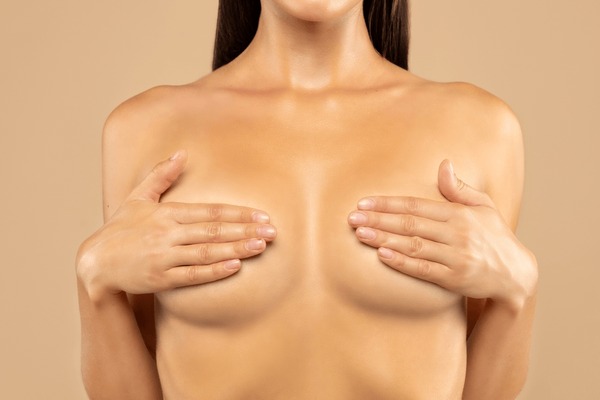
by Enfieldabudhabi | Oct 2, 2025 | Health
Breast symmetry is a common concern among individuals considering breast augmentation. Perfectly symmetrical breasts are rare naturally, and many seek cosmetic solutions to balance differences in size, shape, or position. Breast augmentation in Abu Dhabi offers advanced techniques to help achieve a more symmetrical and harmonious appearance, boosting confidence and body satisfaction.
Understanding Breast Asymmetry
Breast asymmetry refers to differences in size, shape, nipple position, or volume between the two breasts. It can be congenital (present from birth), caused by hormonal changes, weight fluctuations, aging, or previous surgeries. For many, asymmetry can affect self-esteem and how clothes fit.
How Breast Augmentation Can Correct Asymmetry
Breast augmentation provides an effective method for improving asymmetry through customized surgical plans tailored to individual anatomy and goals.
Customized Implant Selection
Surgeons in Abu Dhabi carefully assess the size and shape of each breast and recommend implants that best balance differences. Sometimes, different implant sizes or shapes are used on each side to create harmony.
Precise Surgical Techniques
Experienced surgeons employ techniques that address asymmetry, including:
-
Adjusting implant placement depth.
-
Modifying pocket size to fit each implant perfectly.
-
Combining augmentation with other procedures such as breast lift or fat grafting when needed.
Addressing Nipple and Areola Differences
In some cases, nipple or areola repositioning may be performed concurrently to enhance symmetry and aesthetics.
The Consultation Process
Achieving breast symmetry starts with a thorough consultation where:
-
The patient’s concerns and goals are discussed openly.
-
Detailed measurements and imaging help visualize potential outcomes.
-
Surgical options, risks, and expected results are explained.
This personalized approach ensures realistic expectations and a tailored surgical plan.
What to Expect During Recovery
Post-surgery recovery supports the healing process and the final symmetry results:
-
Swelling may temporarily affect symmetry but usually settles.
-
Patients are advised to follow specific care instructions to avoid complications.
-
Follow-up visits monitor healing and implant positioning.
Benefits of Symmetry in Breast Augmentation
-
Improved confidence and self-image.
-
Better fit and appearance in clothing and swimwear.
-
Enhanced overall body balance and proportion.
-
Increased satisfaction with surgical results.
Why Choose Abu Dhabi for Breast Augmentation
-
Access to skilled and experienced surgeons specializing in cosmetic breast procedures.
-
State-of-the-art medical facilities offering the latest surgical techniques.
-
Culturally sensitive care with attention to patient comfort and privacy.
-
Multilingual medical staff catering to diverse populations.
Frequently Asked Questions (FAQs)
Can breast augmentation completely fix all asymmetry?
While many cases achieve significant improvement, complete symmetry may not be possible depending on individual anatomy. The goal is natural and balanced results.
Will different sized implants feel different?
Implants are designed to feel natural, and differences in size usually aren’t noticeable in sensation or comfort.
Is it safe to use different implant sizes?
Yes, when carefully planned and executed by a skilled surgeon, using different implant sizes is safe and common for asymmetry correction.
How soon will I see the final symmetry results?
Initial results are visible soon after surgery, but final symmetry appears after swelling subsides, usually several weeks to months later.
Are there additional procedures needed for better symmetry?
Sometimes, combining augmentation with lifts or fat grafting is recommended to achieve optimal symmetry.
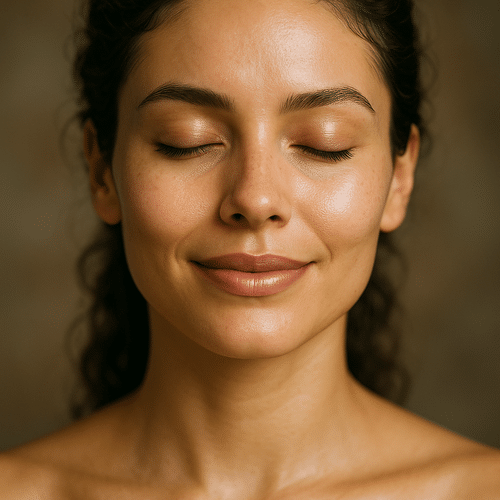
by Enfieldabudhabi | Oct 2, 2025 | Health
EndoLift is increasingly recognized as a modern laser‑based approach for those seeking smoother skin, fewer wrinkles, and firmer, more youthful contours. EndoLift in Abu Dhabi offers an advanced anti‑aging option to address loose skin and signs of aging in a variety of facial and body areas without major surgery.
What Is EndoLift?
EndoLift is a minimally invasive technique that uses laser energy delivered beneath the skin to improve skin tightness, stimulate natural collagen production, and reduce fat deposits in targeted areas. Rather than large incisions or surgical lifts, thin micro‑optical fibers are used to transmit laser energy into deeper layers of skin and tissue. This triggers skin contraction, helps in remodeling collagen, and gently contours the area.
The procedure works by combining two major effects: (1) thermal stimulation of collagen in deeper skin layers, and (2) selective energy directed toward loose or sagging skin and mild excess fat. These combined effects can result in smoother skin texture, attenuation of wrinkles, and a lifting/tightening effect.
How EndoLift Helps Smooth Wrinkles and Tighten Skin
Collagen Activation and Skin Remodeling
When laser fibers deliver energy beneath the surface, they initiate a biological process called neocollagenesis (new collagen formation). Over weeks following treatment, new collagen fibers help fill in skin depressions and improve elasticity. Skin begins to appear firmer because both the support structure and the connective tissue are stimulated to tighten.
Fat Reduction and Contour Improvement
In areas with mild fat accumulation (for example under chin or along the jawline), the laser energy can help reduce small fat deposits. This leads to improved contour and also allows skin that has stretched due to underlying fat to shrink back more tightly. The dual action of tightening and fat reduction helps produce more defined facial or body lines.
Skin Retraction and Lifting
Loose skin tends to sag due to age, gravity, or weight changes. EndoLift helps with skin retraction: the laser‑induced heat causes existing collagen and connective fibres to contract, pulling the skin tighter. This contributes to lifting effects in areas that have started to droop, such as jowls, lower face, under the chin, neck, or other body zones.
Areas of Treatment
EndoLift in Abu Dhabi is applied to multiple areas depending on concerns. These include:
-
The face, especially lower face and jawline, to address sagging and to contour the jaw.
-
Under the chin and neck, for double‑chin reduction and neck laxity.
-
Around the cheeks and mid‑face, helping with contour and reducing loose skin in nasolabial folds region.
-
Body regions with mild loose skin or mild fat pockets: upper arms, abdomen, thighs.
-
Areas with fine lines and wrinkles, especially around the mouth or eye area, depending on how loose or crepey the skin is.
What the Procedure Involves
Pre‑Treatment Assessment
An assessment includes evaluating skin laxity, thickness, location of loose skin or fat, skin type, and personal expectations. This informs decisions around energy settings, laser fiber type, and the number of treatment zones.
Treatment Session
-
Local numbing may be applied to reduce discomfort.
-
Very thin laser fibers are inserted beneath the skin into the target area.
-
Laser energy is delivered in a controlled manner to stimulate collagen and promote tissue tightening.
Sessions are generally shorter for smaller facial areas and longer for larger or multiple zones. Most people can return to normal daily activities after a session.
Improvements Over Time
Some tightening and smoothing effects are visible soon after treatment. Full results tend to emerge over weeks to months as collagen remodels and skin continues to respond. In many cases, both immediate skin retraction and longer‑term firmness are achieved.
Who Is a Good Candidate
EndoLift is best suited for individuals who:
-
Have mild to moderate skin laxity (not very advanced sagging).
-
Want to reduce wrinkles and loose skin but prefer to avoid or delay surgery.
-
Seek improvements in skin contour, such as in jawline or under the chin.
-
Have realistic expectations about how much tightening is achievable.
-
Are in generally good health, with skin that still retains some elasticity.
Certain skin types and conditions may be more responsive; lighter to medium skin tones often have more predictable results, though many clinics indicate the procedure works across a range of skin types.
Results and Maintenance
-
Initial visible improvement may be observed soon after treatment due to immediate skin contraction and tightening.
-
Over time (weeks to a few months), as collagen builds and remodels, there is continued smoothing of wrinkles, improved firmness, and better contour.
-
One session may be sufficient for many individuals, though some choose follow‑up or touch‑up sessions to enhance or sustain results.
-
Maintenance depends on age, lifestyle, skin care, and how much loose skin was present initially. Periodic assessment helps to decide if further treatment is useful.
What to Expect in Abu Dhabi Context
-
Access to modern laser technologies and experienced providers means that treatment protocols are up‑to‑date with international standards.
-
High focus on safety, hygiene, and patient comfort.
-
Customization is common: providers will tailor the procedure to one’s facial structure, skin condition, and aesthetic goals.
-
Recovery is relatively fast; many resume normal routines soon after sessions. There may be mild redness or swelling in the treated areas, but those generally resolve quickly.
Frequently Asked Questions (FAQs)
Can EndoLift remove deep wrinkles or is it only for mild ones?
It is more effective for moderate wrinkles and skin laxity. Deep wrinkles may improve but often require combined approaches (other treatments alongside EndoLift) for more pronounced smoothing.
Is EndoLift only for the face?
No. It can also treat body areas where skin has loosened or where small fat deposits resist diet and exercise. Common body zones include abdomen, upper arms, inner thighs.
How many sessions are needed?
Many people notice good results from a single session, but depending on the severity of skin laxity or number of treatment areas, additional sessions may be advised to achieve or maintain optimal results.
How long do the effects last?
Results last varying lengths. Many see durable improvement over months to a few years, depending on skin condition, age, care, and health. Maintenance and healthy lifestyle help prolong the effects.
Does it require downtime?
Downtime is minimal. Mild swelling, redness, or slight discomfort may occur but typically resolve quickly, allowing return to daily activities soon after.
Is EndoLift safe for all skin types?
It is considered safe for many skin types, though effectiveness and risk vary. An evaluation with a qualified provider is important to assess suitability based on skin tone, thickness, any underlying skin conditions.





